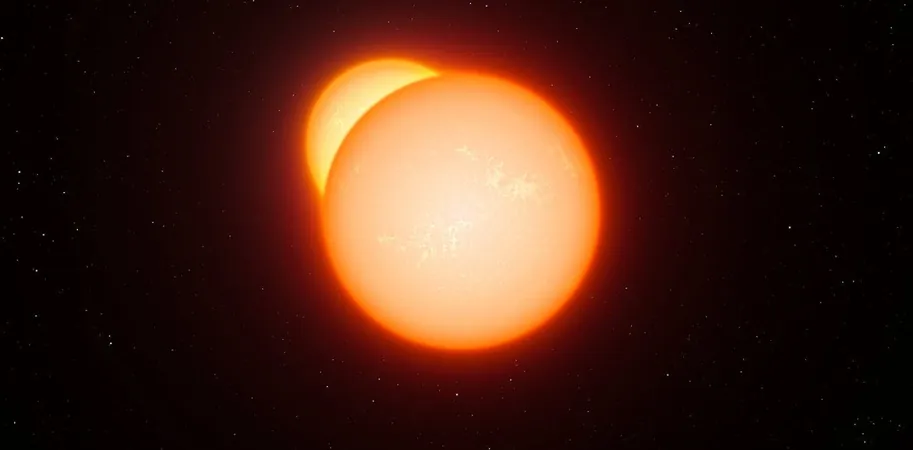
Revolutionizing Astronomy: How AI is Simplifying the Study of Binary Star Systems
2025-07-23
Author: Siti
Stars: The Building Blocks of the Universe
Stars are not just twinkling points of light; they are the fundamental components of our universe! From the vibrant solar system surrounding our Sun to massive clusters and galaxies, understanding stars is essential for grasping the larger cosmic picture. Yet, assessing key star properties like mass, radius, and temperature has historically been a monumental challenge for astronomers.
The Challenge of Measuring Stars
Imagine if our Sun were a basketball on the East Coast of the U.S.; the nearest star, Proxima, would be an orange situated in Hawaii—impossibly far! With even the most powerful telescopes unable to resolve such distances, obtaining accurate measurements of stellar properties has remained elusive. Enter binary star systems, where two stars orbit a shared center of mass, providing a unique opportunity to extract critical data.
Binary Stars: Nature’s Astronomical Scale
Binary stars are like cosmic seesaws! According to Kepler’s laws, the sizes and orbital periods of these stars allow astronomers to deduce their total mass. The heavier star is closer to the center, moving more slowly, while the lighter star orbits farther away. By measuring these velocities, scientists can infer each star's mass.
Unveiling Radii Through Eclipsing Binary Stars
But how do astronomers gauge stellar radii? They rely on a fortunate alignment of binary systems, known as eclipsing binaries. Here, when the stars eclipse one another, the geometry of their shadows reveals their sizes. Although these systems represent only 1-2% of all stars, hundreds of millions exist in our galaxy alone!
The Complexity Behind Accurate Measurements
Despite the advantages of eclipsing binaries, extracting star properties involves intricate modeling. Stars in binaries might not only deform due to their gravitational pull but also interact through radiation, magnetic fields, and spots. This complexity requires complex models, which can take hundreds of millions of minutes of computation time, sometimes even years!
Harnessing Deep Learning to Save Time
This is where innovation steps in! Astronomers are exploring deep learning techniques to fast-track binary star analysis. By training neural networks on extensive datasets of binary properties, these models can instantly predict stellar characteristics—reducing computation time from weeks to mere seconds!
A Quantum Leap in Astronomy
What does this mean for the future of astronomy? With AI slashing analysis time by a staggering million-fold, researchers can derive fundamental properties of countless binary stars in just months—a transaction that would have taken decades! Thankfully, recent studies affirm that AI predictions closely match physical model results—over 99% of the time!
What’s Next for AI in Astronomy?
The road ahead is incredibly exciting. With the powerful combination of artificial intelligence and astronomical data, we stand on the brink of a revolutionary shift in our understanding of the universe. The next step? Deploying AI-driven models across all known eclipsing binary stars, paving the way for a brighter future in astrophysics!


 Brasil (PT)
Brasil (PT)
 Canada (EN)
Canada (EN)
 Chile (ES)
Chile (ES)
 Česko (CS)
Česko (CS)
 대한민국 (KO)
대한민국 (KO)
 España (ES)
España (ES)
 France (FR)
France (FR)
 Hong Kong (EN)
Hong Kong (EN)
 Italia (IT)
Italia (IT)
 日本 (JA)
日本 (JA)
 Magyarország (HU)
Magyarország (HU)
 Norge (NO)
Norge (NO)
 Polska (PL)
Polska (PL)
 Schweiz (DE)
Schweiz (DE)
 Singapore (EN)
Singapore (EN)
 Sverige (SV)
Sverige (SV)
 Suomi (FI)
Suomi (FI)
 Türkiye (TR)
Türkiye (TR)
 الإمارات العربية المتحدة (AR)
الإمارات العربية المتحدة (AR)